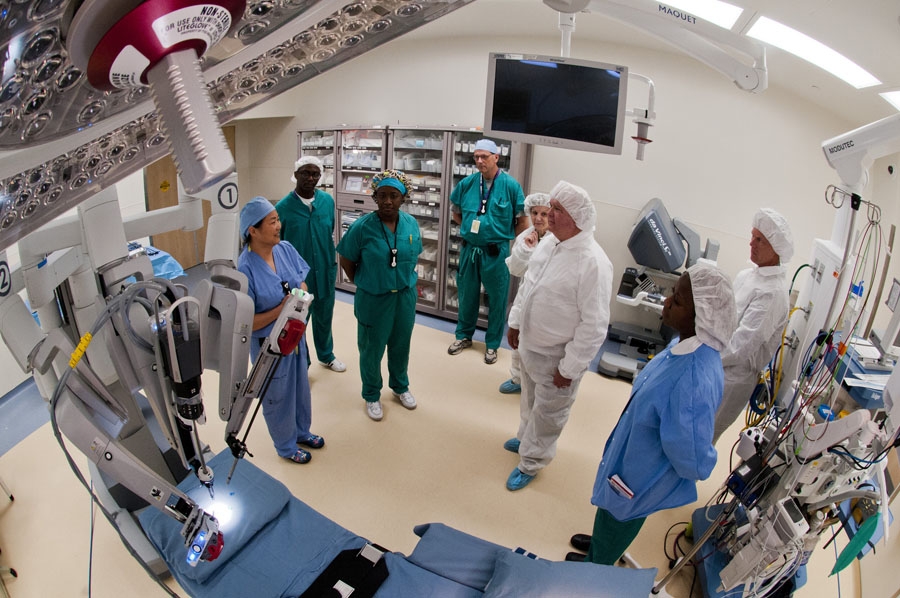Advances in technology are reshaping the health care landscape. For patients, technologies such as 3D printing and advanced genomics are offering bold new treatment options for life-threatening illnesses and injuries. However, technology is not only revolutionizing patient care; it is also transforming the way health care administrators optimize resources, streamline processes, and improve patient and employee satisfaction.
Advances in technology are reshaping the health care landscape. For patients, technologies such as 3D printing and advanced genomics are offering bold new treatment options for life-threatening illnesses and injuries. However, technology is not only revolutionizing patient care; it is also transforming the way health care administrators optimize resources, streamline processes, and improve patient and employee satisfaction. Discover three emerging technologies and how they are helping the health care administration field.
Hybrid Operating Rooms
The demand for minimally invasive surgical procedures is growing quickly, especially with an aging population for whom such procedures are safer and more easily tolerated. At the same time, more physicians and surgeons are demanding access to advanced diagnostic imaging and interventional radiology services.
This situation has led elite institutions to develop hybrid operating rooms, which not only accommodate the tools and equipment necessary for these procedures, but also meet the requirements for a traditional operating space in case complications arise that necessitate a quick response, or even open surgery. Hybrid operating rooms are rapidly becoming a requirement to attract top surgical talent. The ECRI Institute, a nonprofit scientific research organization, projects that 75 percent of cardiovascular surgeons will be working in a hybrid OR by 2018.
For administrators, hybrid ORs encourage optimal use of surgical space and equipment, and these spaces permit a greater number of procedures.
Telehealth Technology
Two major goals of President Barack Obama’s health care law, the Patient Protection and Affordable Care Act, included expanding access to quality care to individuals in remote locations and shifting health care delivery away from costly inpatient facilities to less expensive outpatient and home-based care. Telehealth technology addresses these goals. First, the technology enables video conferencing between patients and providers in underserved rural areas and the physicians and specialists at major institutions. Second, it provides tools for home-based remote health monitoring.
Health care administrators who use these technologies can advance important policy goals and add extra revenue. In 2014, the Center for Medicare and Medicaid Services adjusted reimbursement rules to include payment for telehealth services and remote health monitoring.
Workforce Management Automation
According to Becker’s Hospital Review, staffing and labor costs consume about 50 percent of a hospital’s operating expense. Today’s workforce management solutions incorporate powerful analytics tools to help administrators maintain optimal staffing levels that cut costs without sacrificing patient care. Managers gain insight with features such as overtime forecasting, budget variance alerts and caseload assessments that pinpoint optimal staffing levels.
These tools can even lower the administrative burden in managing staffing. Rich Miller, CEO of OpenTempo, related the case study of Fletcher Allen Health Care in Vermont. The organization manually managed scheduling for its 160 OR nurses, requiring 80 staff hours each period simply to build schedules. After implementing aworkforce management automation tool, the staff time required to manage schedules dropped to only eight hours per period, a tenfold decrease.
For MBA students interested in health care management, especially concentrations such as Health Care Administration, Gerontology, and Leadership & General Management, the new technologies mentioned above are at the forefront of efficient resource management and improved patient care.
SOURCES LINKED TO IN THE ARTICLE:
http://www.hhnmag.com/Magazine/2014/Mar/fea-clinical-management
http://www.techhealthperspectives.com/2014/11/05/cms-expands-telehealth-reimbursement-in-new-rule/
http://www.beckershospitalreview.com/workforce-labor-management/how-hospitals-can-cut-costs-and-increase-efficiencies-through-workforce-management-automation.html
SOURCE CONSULTED FOR THE ARTICLE:
http://www.beckershospitalreview.com/healthcare-information-technology/10-technologies-to-keep-hospitals-competitive.html





